The Vibrant World of Roppongi: Art, Dining, and Nightlife in Tokyo
Roppongi is best defined as a city with contrasting reputations. For some, it’s the center of Tokyo’s nightlife. And for others, it’s the focal point of elegant art, shopping, and dining. This exciting mix has made Roppongi one of the most fun places to be in Japan.
Discovering Roppongi: Tokyo's Metropolitan Melting Pot

Roppongi is a vibrant district in Tokyo known for its eclectic mix of art, entertainment, and nightlife. Located in the Minato ward of Tokyo, this district is home to several art museums, dozens of nightclubs, bars, art museums, hotels, shopping centers, and restaurants. To fully grasp the spirit of Roppongi, you need to understand what it’s like during the day and at night.
Daytime in Roppongi sees swarms of local and foreign tourists visiting the Roppongi Hills skyscraper complex, a major tourist attraction in the city. Many of these visitors come to sightsee at the Tokyo City View observation deck located in the complex. Others shop at the fashion boutiques or visit the Mori Art Museum. Tokyo Midtown, another daytime tourist destination in Roppongi with its own collection of museums, boutiques, restaurants, and hotels, is the only rival to Roppongi Hills.
After dark, Roppongi’s landscape shifts as lovers of nightlife take over the scene. The bars, restaurants, and clubs cater to foreigners in the city, making Roppongi an all-time favorite of the expat community in Tokyo. In this post, we’ll take a deeper dive into what makes Roppongi unique, starting with the exciting story of how the area came to be such a contrasting yet well-balanced district.
The Evolution of Roppongi: From History to Modern Hub
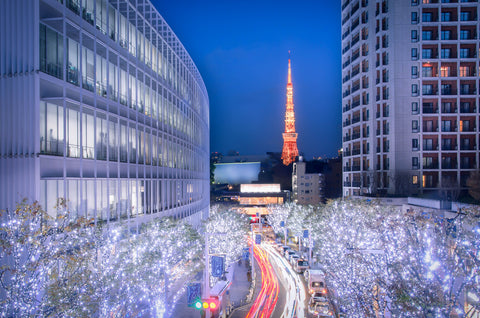
Roppongi was named after six very old zelkova trees that served as landmarks for the village around 1660. However, there are other theories, one of which suggests that the name came from six powerful Japanese magnates (daimyōs) who lived nearby. In the Edo period (1603–1868), what we now know as Roppongi was the home of several temples, samurai residences, and shrines. The start of the Meiji era (1868–1912) saw most of these large samurai residences converted into military facilities. In a few years, the presence of soldiers in the area led to its early rise as a nightlife district. From 1878 to 1947, the Roppongi area was officially considered part of the Azabu ward.
World War II saw most of Roppongi destroyed by aerial raids due to its status as a military base. When the war ended, the US military took over what was left, and their occupation started Roppongi’s reputation as the home of foreigners in Japan. As a result, most of the restaurants, nightclubs, and bars began to cater to US citizens. Young Japanese who desired a taste of American life replaced the American soldiers after they left in 1959. Roppongi soon began to attract entertainers and artists, further solidifying its reputation as a vibrant nightlife scene.
Between 1999 and 2003, two development projects, Roppongi Hills and Izumi Garden Tower, were started and completed in Roppongi. These projects gave the district a massive economic boost and have shaped its current identity.
Navigating Roppongi: Getting There and Around

If you’re in Tokyo, you can reach Roppongi easily via public transportation. We recommend the four routes below. They are cheap and quick.
-
From Tokyo Station to Roppongi: Take the Marunouchi Line from Tokyo Station to Kasumigaseki Station. From there, you can get a direct ride to Roppongi Station via the Hibiya Subway Line. The entire trip should take approximately 15 minutes.
-
From Shibuya Station to Roppongi: This is the only route that’s partially covered by a JR Pass. Take the Yamanote Line from Shibuya Station to Ebisu Station. The pass covers that area. From there, take the Hibiya Line to Roppongi Station. The entire trip should take approximately 15 minutes
-
From Shinjuku Station to Roppongi: Take a direct trip from Shinjuku Station to Roppongi Station via the Oedo Subway Line. The trip should take about 10 minutes.
-
From Ueno Station to Roppongi: Follow the Tokyo Metro Hibiya Line from Ueno Station and get off at Roppongi Station. The ride takes around 25 minutes.
The Nogizaka Station, which is on the Tokyo Metro Chiyoda Line, is another viable stop, although it’s not the main one. Another alternative stop is Roppongi-itchome Station via the Tokyo Metro Namboku Line.
Once you get to Roppongi Station, you can walk to some of the main attractions. For instance, Roppongi Hills is only 8 minutes away from the station on foot. We wouldn’t recommend that you take the bus because the load time, transfers, and stops will waste your time. If you can’t walk, you can hail a taxi, which should cut your time in half.
Artistic Adventures: Exploring Roppongi's Art Scene
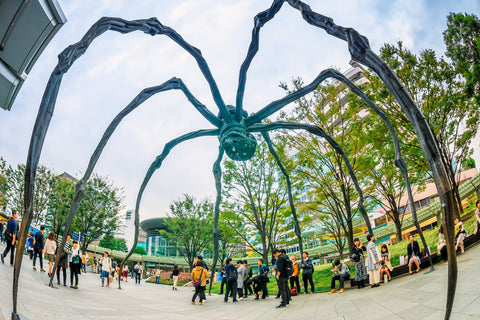
If you like art, you’ll be delighted to know that Roppongi has a renowned art scene featuring some of the best museums and galleries in Tokyo. The famous Roppongi Art Triangle is a collection of three magnificent art museums and centers in the city. Learn more about them and other notable art galleries in our list below:
-
Mori Art Museum: A museum of contemporary Japanese and Asian art located on the top floor of the Roppongi Hills Mori Tower. The facility features the works of artists all over the world and showcases world-class visual arts, designs, and architecture. It’s part of the Roppongi Art Triangle. It’s also the venue for the famous Roppongi Crossing, a series of exhibitions that occur every three years.
-
Suntory Museum of Art: The second piece of the Art Triangle, Roppongi. It’s the most popular art museum in Tokyo Midtown and is located on the third floor. The facility is famous for its antique collections and traditional crafts.
-
The National Art Center, Tokyo: The third and last part of the Roppongi Art Triangle. It has one of the largest exhibition spaces in Japan and is the only national art museum in the country without a permanent collection. It’s all about exhibitions for the center, as they regularly host temporary art exhibitions.
-
21_21 DESIGN SIGHT: The first design museum in Japan. Tadao Ando, one of Japan's top architects, was responsible for its design. 21_21 DESIGN SIGHT hosts several temporary exhibitions that explore the relationships between design and daily human life.
-
Gallery Side 2: An art gallery originally opened to showcase the works of international artists. Today, Gallery Side 2 has a hybrid policy and equally caters to Western and Japanese artworks.
Roppongi Hills: A City Within a City
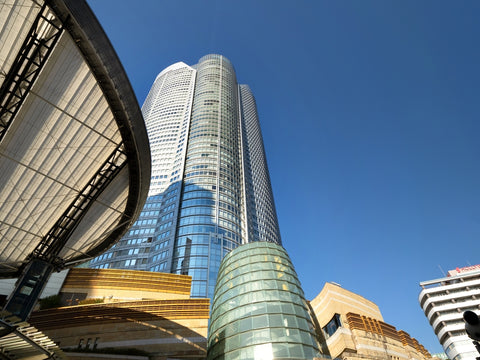
Since opening in 2003, Roppongi Hills has been like a brand new city embedded into Roppongi. It’s a massive building complex that consists of both residential and commercial spaces. From luxury fashion shops to Michelin-starred restaurants and world-class recreational facilities, Roppongi Hills has it all. The complex also contains several offices, a movie theater, and the Grand Hyatt Tokyo, a 5-star luxury hotel.
Most of the foreign and local tourists who come to the complex head to the Mori Tower, a 54-story skyscraper that houses several retail stores and restaurants on the bottom floor. The tower’s two main tourist attractions, the Mori Art Museum and Tokyo City View, are on the top floors. Tokyo City View has indoor and outdoor observation decks where people pay to enjoy panoramic views of Tokyo and its skyhigh landmarks like the Tokyo Tower and Tokyo Skytree. The outdoor deck is called the Sky Deck, and it’s located on the rooftop of the 238-meter tower.
Tokyo Midtown: Innovation Meets Luxury

Tokyo Midtown is a lot like Roppongi Hills. It has its own shopping areas, offices, residential spaces, recreational facilities, and high-end restaurants. Like the Hills, it also has a massive tower as a centerpiece, the Midtown Tower. This tower stands at 248 meters, only slightly taller than the Mori Tower. Up until Toranomon Hills dethroned it in 2014, it had been the tallest building in the city since its completion in 2007.
The top nine floors of the Midtown Tower are reserved for the Ritz-Carlton Tokyo, one of the best luxury hotels in Japan. The hotel offers state-of-the-art amenities and spectacular views of Mt. Fuji, the Imperial Palace Garden, and the Bay Area. Tokyo Midtown is also home to several green spaces and the 21_21 DESIGN SIGHT museum.
Roppongi's Nightlife: An Insider's Guide
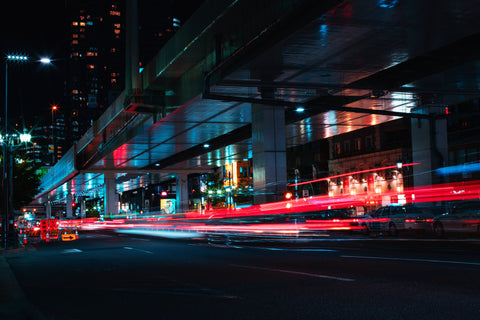
Sunset marks a shift in Roppongi from a commercial center to Japan's nightlife capital. The streets of Roppongi never sleep, thanks to the swarms of thrillseekers visiting the wide variety of clubs, bars, izakayas, and live music theaters in the area. If you love loud music, dancing, drinks, and wild fun, nighttime Roppongi is the place to be.
Some of the most popular nightclubs and bars in Roppongi are Odeon Tokyo, Burlesque Tokyo, 1OAK Tokyo, The New Matrix Bar, Bar Starman, and Villa Tokyo. For live music performances, feel free to check out Abbey Road, EX Theater Roppongi, and Bauhaus Roppongi.
Culinary Delights: Dining in Roppongi
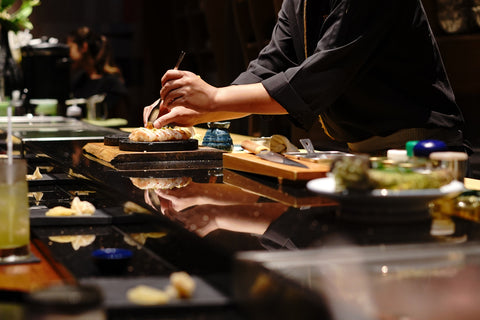
Many of the restaurants in Roppongi have earned Michelin stars, making it a major player in Japan’s fine dining scene. Next, we’ll recommend the top dining spots in the district, covering a range of cuisines and dining experiences, from high-end restaurants to casual eateries.
-
Edition Koji Shimomura: This 2-star Michelin restaurant is famous for its exquisite French cuisine.
-
Sushi Saito: It has 3 Michelin stars and makes arguably the best sushi in Roppongi.
-
Fiorentina: Located in a hotel, it’s the perfect spot to enjoy a high-end Italian breakfast.
-
BeerBar Fujizakura Roppongi: Craft beer meets fine dining in this award-winning restaurant.
-
Oak Door: Enjoy burgers, steak, curry, and other casual meals at the famous Roppongi steakhouse.
Shopping Spree: Retail Therapy in Roppongi
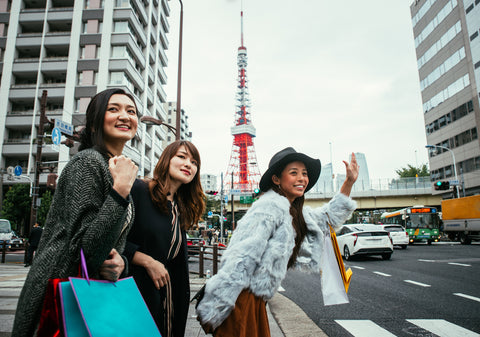
The shopping scene in the district covers luxury items and casual souvenirs. If you’re looking to fill your shopping bags, Roppongi Hills and Tokyo Midtown are the best places to go. Many of the retail establishments at the complexes are luxury boutiques selling designer brands. However, there are a few mid-range brand stores in the building. Local shops are scattered across the district where you can buy street art, souvenirs, snacks, and sweets.
Cultural Immersion: Festivals and Events in Roppongi

During your stay in Roppongi, you should consider immersing yourself in the local culture by attending some of the annual festivals and events taking place in the area. We picked out the three best ones.
-
Roppongi Hills Bon Odori (late August): A summer celebration exclusive to the district. Taking place at the Roppongi Hills Arena, it’s a three-day annual event with lots of music, dancing, and food stalls.
-
Roppongi Art Night (late May): An annual display of contemporary art. The festival showcases a variety of artworks and creative performances. This event has multiple venues, including Roppongi Hills, Tokyo Midtown, The National Art Center, Tokyo, the Mori Art Museum, the Suntory Museum of Art, and 21_21 DESIGN SIGHT.
-
Tokyo International Film Festival (late October to early November): A one-week event at Roppongi Hills that celebrates Japan’s cinematic industry. It’s the biggest film festival in the country.
Green Spaces: Finding Nature in Roppongi
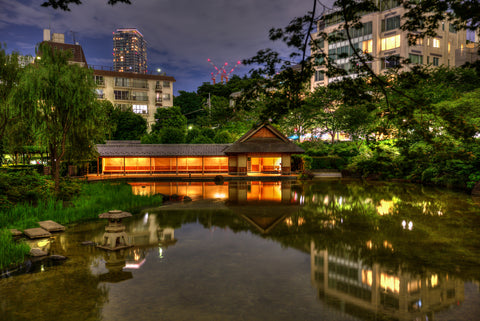
We were serious when we said Roppongi has a contrasting reputation. For some, the district could serve as a respite from the bustling urban environment thanks to the green spaces and parks in the area. Mori Garden is a popular green space in Roppongi Hills. Inside, you'll find waterfalls, trees, and streams. It’s a great place to admire cherry blossoms in the spring.
Another famous yet serene location is Hinokicho Park. Formerly a military base, the area has been transformed into a park with its own pond, stream, and grassy green spaces.
Roppongi's Architectural Wonders: A Tour of Modern Marvels
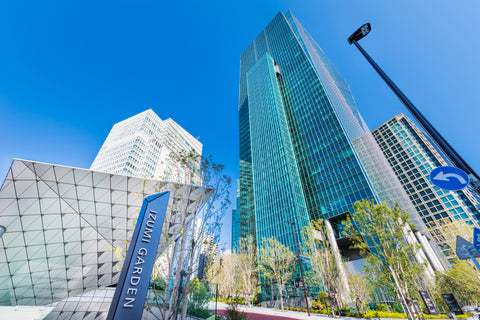
Roppongi is home to several architectural wonders that contribute to Tokyo's futuristic aesthetic, including the sleek designs of Roppongi Hills and Tokyo Midtown and the skyline-defining structures of the Mori Tower and Midtown Tower. For example, the first, second, and third floors of the National Art Center, Tokyo, were designed by Kisho Kurokawa to let in a surreal amount of natural light. Large steel plates make up the roof of Tadao Ando's 21_21 DESIGN SIGHT. Then there’s the 201-meter-tall Izumi Garden Tower, made of turquoise glass.
Interactive Entertainment: Roppongi's Unique Attractions

Both Roppongi Hills and Tokyo Midtown are hubs for interactive entertainment. The complexes contain facilities for casual leisure and fun for people of all age groups. You can enjoy virtual reality experiences at standing bars, play arcade games, or explore themed cafes.
Planning Your Visit: Making the Most of Roppongi
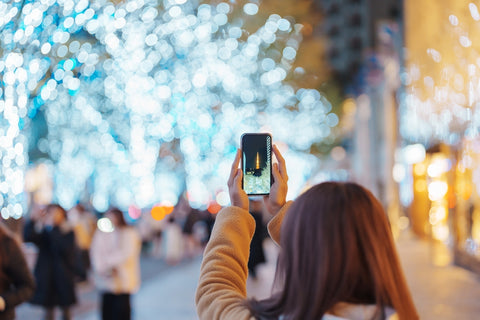
The best part about Roppongi is that, despite its reputation as a district with many upscale establishments, you can still have tremendous fun without going out of your budget. For every high-end restaurant or hotel, there is a local alternative just around the corner. Do your due diligence to confirm the average prices of the places you plan to visit and the stores you want to shop at before your trip.
You don’t have to travel to Japan for luxury shopping and high-quality gifting when you have Bokksu Boutique at your fingertips. Explore our store for luxury items that rival the best shops in Roppongi!
Author Bio











